-
1Wiring Diagram
![]()
![]()
-
2Install TensorFlow Lite Library
Download the Ameba customized version of TensorFlow Lite for Microcontrollers library at https://github.com/ambiot/ambd_arduino/tree/master/Arduino_zip_libraries.
Follow the instructions at https://docs.arduino.cc/software/ide-v1/tutorials/installing-libraries to install it.
Ensure that the patch files found at https://github.com/ambiot/ambd_arduino/tree/master/Ameba_misc/ are also installed. -
3Open Magic Wand Example
Open the example, “Files” -> “Examples” -> “TensorFlowLite_Ameba” -> “magic_wand”.
![]()
-
4Upload code and run
Upload the code and press the reset button on Ameba board once the upload has completed.
Holding the Accelerometer steady, with the position x-axis pointing to the right and the positive z-axi pointing upwards, move it following the shapes as shown, moving it in a smooth motion over 1 to 2 seconds, avoiding any sharp movements.![]()
If the movement is recognised by the Tensorflow Lite model, you should see the same shape output to the Arduino serial monitor. Different LEDs will light up corresponding to different recognized gestures.
Note that the wing shape is easy to achieve, while the slope and ring shapes tend to be harder to get right.![]()
 pammyleong
pammyleong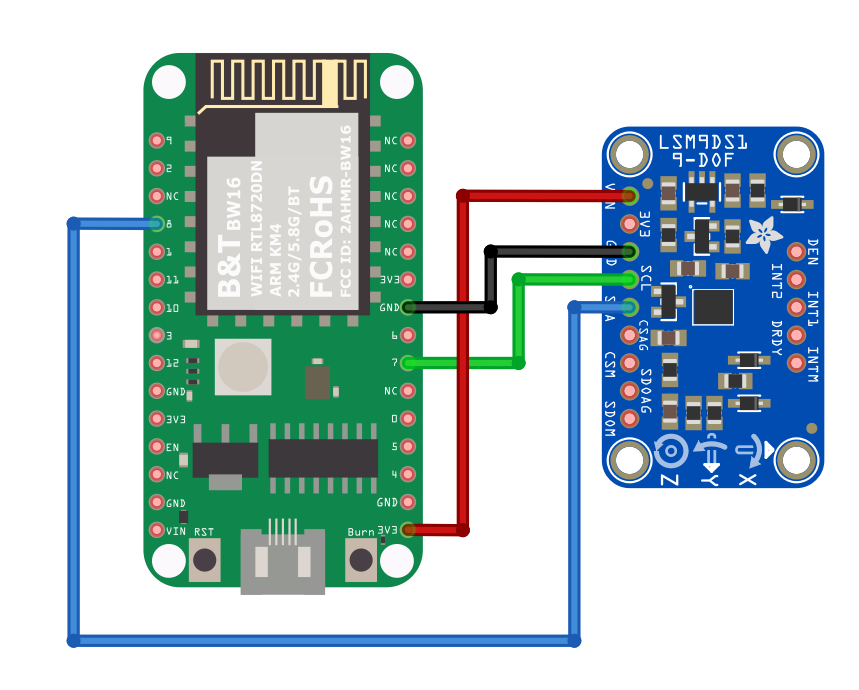
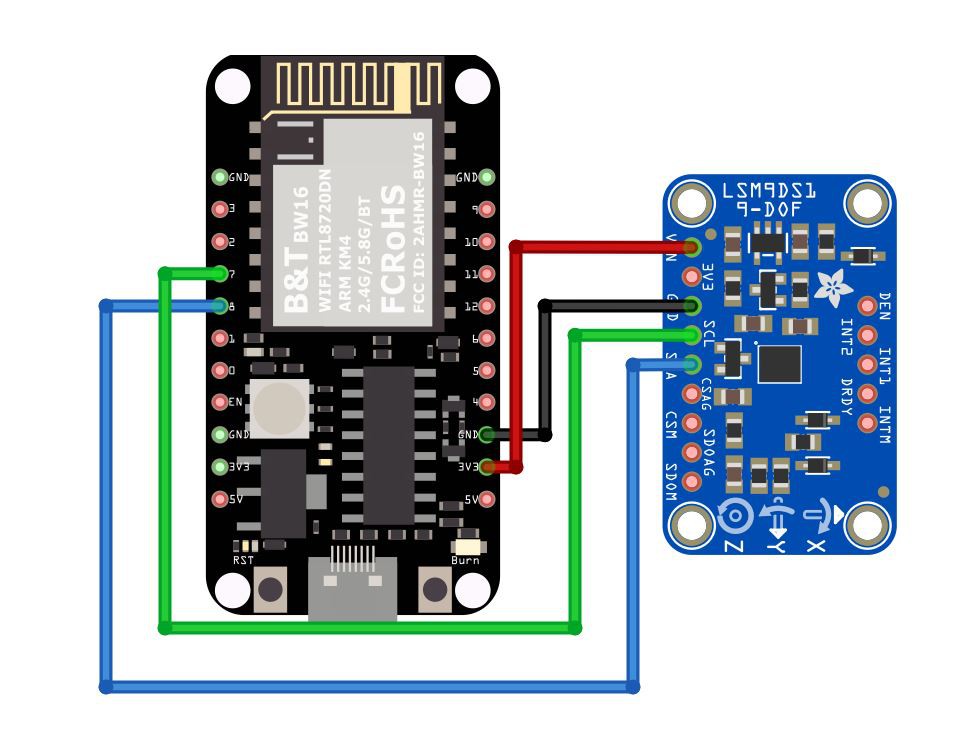
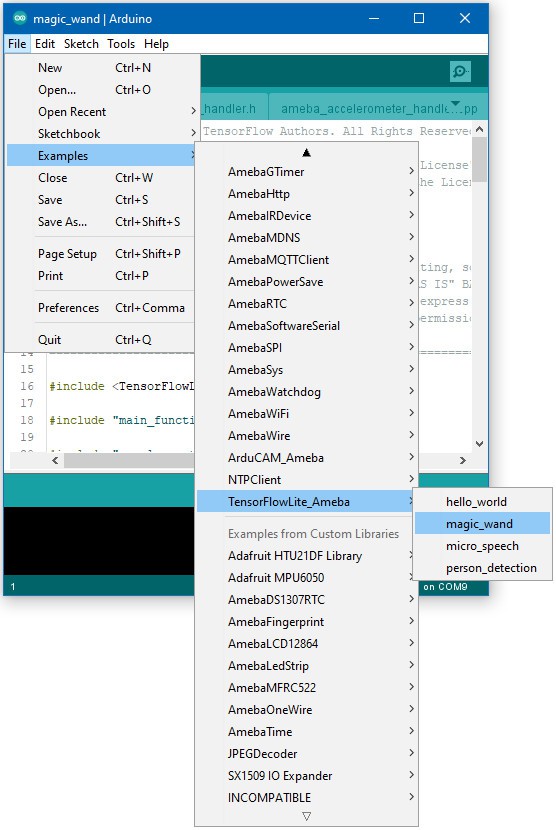
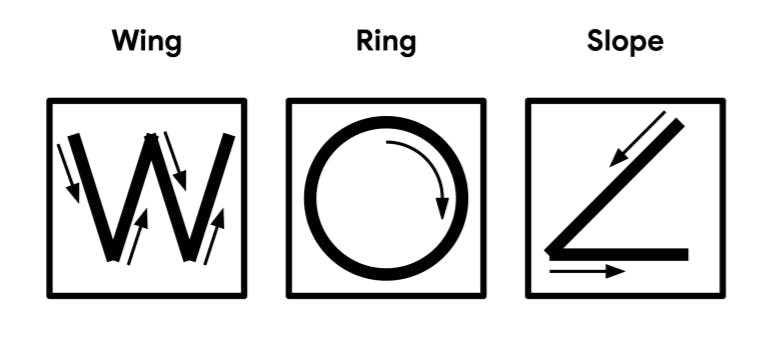
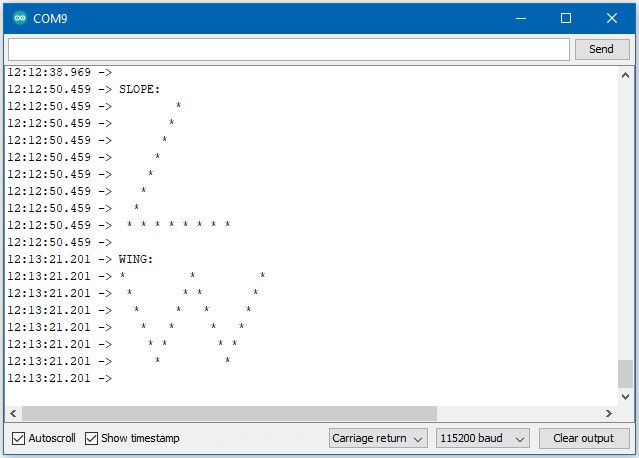
Discussions
Become a Hackaday.io Member
Create an account to leave a comment. Already have an account? Log In.